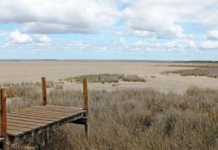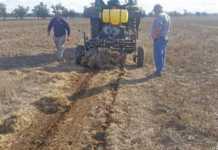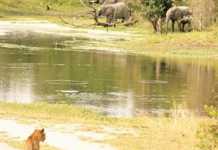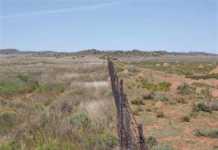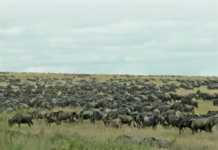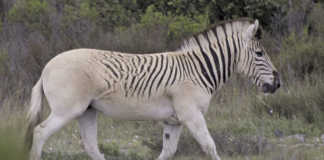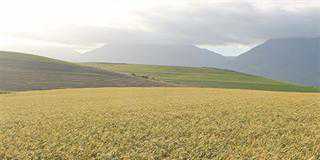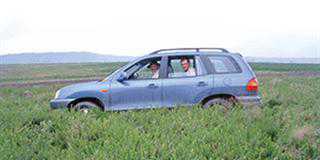When planting sericea lespedeza, Willie Nel, who farms on Moolmanshoek, near Ficksburg in the Free State, chose a section of a neighbouring farm he recently bought. The land was on a steep slope and was badly eroded.
Most of the shallow topsoil had been washed away. But he was confident that sericea would grow well there.
The cultivar he used was called “Interstate”, as it was bred for stabilising road cuttings along the US’s interstate highways.
Eventually, Interstate sericea was used for all the early plantings, which were fortunately limited to small-scale trials on a few farms, because he didn’t know at the time the cultivar had a high tannin content, making it relatively unpalatable.
Virtually all the farmers who took part in the trials gave up on sericea, except Willie.
After getting it well established, which took two seasons, he grazed it primarily with Dhone Merino stud ewes. Once they got used to it, they ate it readily and produced excellent lambs. Willie even grazed cattle on it, but Interstate sericea was more suitable for sheep.
Scientists reject sericea
However, pasture scientists at Nooitgedacht Research Station had reason to be sceptical of sericea. It was planted in a veld camp many years before being planted on Moolmanshoek, but no animals would eat it.
Instead, it became an invasive weed as sericea seedlings grow quite happily in veld or any other grass for that matter, including kikuyu. Several states in the US have even declared sericea a noxious weed.
The scientists were understandably reluctant to accept that the problem was in fact cultivar-related. Apparently, the common sericea was used for all the first plantings in South Africa. This is extremely unpalatable and of no real value.
Sericea wins out
The deadlock between those who saw potential in sericea and those who didn’t was finally broken by farmers who planted the AU Lowtan cultivar and demonstrated the great value of this legume.
AU Lowtan was developed by scientists at Auburn University in Alabama. As the name indicates, it has a lower tannin content than Interstate sericea does, and is far more palatable.
Observations made over 25 years have confirmed that sericea can produce good forage on poor soil, which is often useless for anything else.
The breakthrough in accepting this perennial legume was made on three farms in the Cedarville area, where the lands chosen by the farmers to plant sericea had a very poor production record.
One planting was done right next to the Kokstad/Cedarville highway. An observant farmer who had driven past this land for many years said he had never seen a crop produce anything of real value there, until it was planted to sericea. He was so impressed that he started planting sericea on his own farm.
There have been many chances to observe how well sericea can transform poor land into highly productive land.
A good example is the farmer in Kriel who sold 20ha of topsoil to a mining company that needed it for mine rehabilitation purposes.
As no farmer in his right mind would sell topsoil from his best land, he chose a shallow and low-potential land to scoop away the little bit of topsoil. After scooping, the shale was exposed in many places.
This land was established to sericea and is now producing good grazing.When fitting sericea into a typical Highveld farm, with veld varying from low to high potential, plant all the low-potential land to sericea.
Then use it for early spring and summer grazing, and for hay production. Sericea is vastly superior to Eragrostis curvula. Nitrogen fertiliser isn’t required and sericea makes a superior-quality hay.
Considerably higher in protein, it’s far better for supplementing animals overwintered on veld, and can lower winter lick costs.

